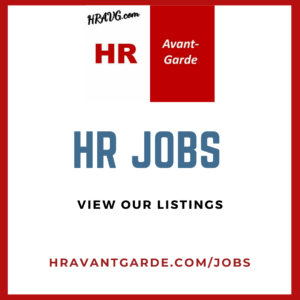by HR Avant-Garde | Oct 13, 2015 | HR Articles

Can you be replaced by an algorithm that feeds on big data? (Image: Pixabay)
Which HR specialty will maximize your paycheck while limiting your exposure to redundancy in today’s on-demand economy?
Computers excel at defined tasks. Tasks accomplished through explicit rules, no matter how complex, can be completed by software. This is why tactical jobs’ wages against inflation have decreased since the 1970s. Most middle management jobs are tactical and continue to be eliminated by algorithms feeding on Big Data.

Just as previous humanoids have become extinct to make way for modern man, the middle-level manager is a concept of the past. (Image: Pixabay)
Looking at transactional jobs as historical examples, consider the 1960s workplace and how voicemail and email has eroded the secretarial professions.
Middle-level managers reached pinnacle earning in the pre-computer age. Their function was not to generate strategy but in directing flows of information between worker bees and executives.
These jobs still exist, but with shrinking numbers and declining real wages. Jobs that cannot be done via explicit rules – manual labor and strategy creation – are safe from elimination and explain much of income inequality.
Many HR specialties are both middle management and tactical. They include recruitment, ER, compensation, benefits, training and HRIS. These functions remain vital, and as more intelligence is programmed into software, their value added will even increase. However, as technology requires fewer workers to accomplish more with less training, HR tactical specialists will continue to see their real wages decrease.

Even before the financial crisis of 2008, real wages for US workers were trending downward. (Image: Wall Street Journal)
Technology decimates lawyers’ billable hours so why would HR specialists be any safer?
When technology hit the US agriculture sector, the new motto was, never have so few fed so many, as the number of farming professionals decreased while crop yields increased.
As technology becomes more powerful, mobile and cheaper, which HR specialties will keep you relevant in the marketplace? We’ll explore the answer in our next post.
The Least You Need to Know.
- The intersection of algorithms and big data is automating many middle level management functions. This pushes wages down.
- This automation means fewer middle level managers are needed; most traditional HR jobs are middle level management jobs.
- Machine to Machine Learning (M2M) and Master Algorithms will exacerbate this phenomenon.
Vincent Suppa works with startups and investors and teaches graduate courses at New York University. His email is suppa@suppa.org.
© Vincent Suppa 2015
by HR Avant-Garde | Jun 16, 2015 | HR Articles

How do you facilitate innovation? (Image: Pixabay)
Among the value-added activities of HR is combining talent to maximize innovation.
Innovation comes about in two ways: creation of new technologies and recombining existing technologies. The US Patent Office’s Handbook of Classifications illustrates this point. The Patent Classification system includes classes and subclasses; the former contains creation of new technologies, while the later combines varying processes with different structural and functional features of existing technologies.

Edison recombined existing technologies to create the light bulb. (Photo: Public Domain)
When new technology is invented, the USPTO issues a new single classification code. However, the majority of issued patents are not granted on the basis of new discoveries, but on recombining existing discoveries. Instead of a new single code, a new recombination of class and subclass codes is issued.
In the 19th century, half the patents were for single code inventions – new discoveries. In the 21st century, over 90% of patents are for inventions combining two or more codes – recombination.
Today’s innovations combine existing technologies in new ways by people who see new interactions in previously made discoveries. When Edison created the light bulb, we already had filaments, electricity and glass to create vacuums. It was Edison’s patentable recombination of previously discovered technologies that created the lightbulb.

Today’s patents are mostly recombinations. (Photo: Public Domain)
Figuring out how to recruit and incentivize talent responsible for each subcomponent across a startup’s value chain is what avant-garde HR professionals do before placing the right talent into optimal combinations.
By the time Tal Givoly created Medivizor, he had the sum total of medical science and the computer science of algorithms at his disposal. By recombining discoveries of these two broad disciplines across the apparatus of the internet, he created innovations with huge social gains for society supported by a sustainable business model.
HR Avant-Garde spent time Inside the Boiler Room with Tal Givoly. Click here to see what he had to say.
Vincent Suppa works with startups and investors and teaches graduate courses at New York University. His email is suppa@suppa.org.
© Vincent Suppa 2015
by HR Avant-Garde | Apr 14, 2015 | HR Articles

What differentiates a great business from an average one? (Image: Pixabay)
HR is not the most important entity companies compete on in today’s knowledge economy. It is the only one.

People were interchangeable in the old economy. (Photo: Public Domain)
In the industrial economy, firms generated net income by leveraging hard assets. Firms that made the best use of their land and machines made the most profits.
But we have now transitioned to a knowledge economy. Today’s most successful companies, born inside of dorm rooms, parents’ garages and family basements, today register some of the highest market capitalizations on record as they compete on their people instead of their hard assets.
How much land and machines does one need to code software, develop an app, or create an algorithm? What are the hard assets that Facebook, Google and Twitter required to create their value? The most pedantic response would be a computer, a device virtually considered a commodity.
In the industrial assembly line age, factory workers were interchangeable, performing redundant tasks as firms competed by leveraging hard assets, including their tools.

Tools are interchangeable in a knowledge economy that competes solely on people. (Photo: Vima.com)
In today’s knowledge economy, assets used to create value have become commoditized. The tools employees now use across competing companies generally include the same software and hardware. Most of us create value for our employers and customers using the same excel sheets and computer processors. In the knowledge economy, it is not the people who are interchangeable but the hard assets instead. Today people – not the assets they use – are the competitive advantage.
This makes every company, acknowledged or not, an HR company as they create value in the market place by recruiting, incentivizing, developing and yes, even in how they exist their people.
Regarding the old economy, additive manufacturing, nicknamed 3D printing, is ushering in the age of social manufacturing, a phenomenon that will commoditize the manufacturing economy itself, turning even those companies, into HR companies.
The least you need to know:
- Companies historically competed on their hard assets with the bulk of their employees functioning as interchangeable commodities.
- In today’s knowledge economy, the model is reversed; the tools firms use are now commodities as people represent their competitive advantage.
Vincent Suppa works with startups and investors and teaches graduate courses at New York University. His email is suppa@suppa.org.
© Vincent Suppa 2015
by HR Avant-Garde | Apr 12, 2015 | HR Articles

Does HR view its role too narrowly? (Photo: Pixabay)
Imagine the human resource professional walking through the hallways knowing that she was responsible for half of her company’s growth. Would knowing this change the conversations she had, the questions she asked and even the data she measured and observe? Wouldn’t it impact her entire perspective?

The formula for economic growth shows HR to have a bigger role in the business than many people realize.
One measurement of a country’s economic growth is its workforce multiplied by financial capital multiplied by productivity. Let’s equate a country’s economic growth with the firm’s incorporated under its flag.
Let’s consider the three multipliers of economic growth. HR is responsible for the firm’s human capital – the very essence of our beloved profession. It is fair to posit that HR’s wheelhouse includes none of the second multiplier, the company’s financial capital.
The third multiplier, productivity, arguably falls under the responsibility of both Chief Technology and Chief Human Resource Officers. A portion of productivity improvements is owed to deployment of more efficient technologies. Another portion of productivity, though, is due to how work is organized, how jobs are designed, and even how workers are incentivized against the company’s culture – all under the purview of HR.

HR owns half the formula for economic growth.
A more aggressive argument would maintain that even the technology portion of productivity is accomplished by employees that are recruited and incentivized by HR. But we are not haggling over an equation but arguing to influence the mindset of HR professionals by asking if they conduct themselves realizing how much of their company’s economic growth they own?
Bereft of that knowledge, the profession falls short. Armed with the mindset that half of the growth equation falls under its purview, HR can fulfill its true potential in leading their company’s growth.
Knowing this can change everything because if you adjust a canon by mere inches, it changes the trajectory of a cannonball by a mile.
The Least You Need to Know:
- Three multipliers of economic growth are human capital, financial capital and productivity. HR arguably owns at least half of this equation.
- Operating under this premise transforms the HR mindset to one of a business mindset with HR expertise.
Vincent Suppa works with startups and investors and teaches graduate courses at New York University. His email is suppa@suppa.org.
© Vincent Suppa 2015
by HR Avant-Garde | Apr 11, 2015 | HR Articles

Traditional CEOs typically sit in spaces befitting their leadership. Corner offices are coveted because they are far scarcer than one-window offices aligning the corridors. With fern plants graced along windows of two exterior walls, executives in corner offices have made decisions paving the way for the next generation of business leaders.

Traditional executives covet the corner office. Startup CEOs are changing the world inside the boiler room. (Photo: Pixabay)
Our new leader rarely wears formal business attire. She works from her dorm room or maybe out of her garage. If she has scraped together enough money from angel investors, she’ll lead her team from an open space inside a boiler room.
While all business leaders thrive on uncertainty, our new leader thrives on ambiguity.
The boiler room is the least coveted office space. But it’s also a metaphor for an office with a potentially high ROI. The rent is low, but the upside can prove irresistible: monetizing the next great disruption that other boiler room entrepreneurs can leverage. Christopher Nolan wrote, “there is nothing more contagious than an idea.”
Because startups are rooted in the knowledge economy, there’s no better place for HR than inside the boiler room. With every startup using the same commoditized tools (computers and smartphones), people remain the last field of competitive advantage. Only human capital, through the generation of ideas, differentiates startups.

It’s not glamorous in the boiler room, but the attraction is the potential upside in dollars and impact. (Photo: elfgoh)
That is why HR belongs in the boiler room and why we feature Inside the Boiler Room to introduce innovative people striving to monetize business model disruptions.
The world needs startups because their innovations can democratize services and improve social welfare. Venture capitalists need startups to allocate their financial capital for a return on investment. And when the final algorithm automates the last vestige of tactical HR, our profession will find no better place to land than inside the boiler room.
Vincent Suppa can be reached at suppa@suppa.org.
Ross Brand can be reached at ross.brandx@gmail.com.
© 2015 Vincent Suppa and Ross Brand
by HR Avant-Garde | Nov 12, 2014 | HR Articles

How do you measure the dollar value of your workforce? (Photo: Pixabay)
“I want to help people and I hate math” has been a common refrain of some people when joining our beloved HR profession. For those of us looking to augment our qualitative foundation with a quantitative business-focused approach, what might be the first ratio we quantify?
HR Avant-Garde advocates that there are no HR problems, only business problems with HR solutions. It’s a powerful mindset that directs us to first analyze business metrics before HR metrics.

The difference between a company’s book value and market cap is its Human Capital.
Market capitalization is the value of a company’s outstanding shares calculated by multiplying its stock price by the number of those shares. This represents the firm’s total worth.
A company’s book value, located on its balance sheet, is the value of assets shareholders would theoretically receive if the company were liquidated.
What causes the gap between a company’s market capitalization, when it’s vibrant with employees, and its post liquidation book value, when it is bereft of people?

HR Avant-Garde uses these formula to compare firms within an industry to measure the productivity of their human capital. (Image: investmentmalaysia.com)
Our question is also our answer since only people can organize assets to create financial value exceeding the cost of those assets. Successful companies maintain a wide gap between book value and market cap. When people lose confidence in companies, market capitalization falls below its book value. It is evident that employees are charged with creating value exceeding the cost of assets. Whether a company is above or below this watermark falls under the purview of HR.
PTBV (Price to Tangible Book Value) quantifies the concept as a ratio dividing stock price by book value per share. Ratios, like common size balance sheets, make it feasible to compare companies of different sizes in meaningful ways. Until all HR professionals benchmark this ratio, it will remain a competitive advantage for those who do.
If you already benchmark this ratio as a high-level dashboard indicator of performance, HR Avant-Garde suggests benchmarking PTBV’s standard deviation against your industry and competitors since bullish markets tend to uptick stock price for all companies.
The Least You Need to Know:
- The gap between tangible book value and a firm’s market cap is due to the value added by people who make a company worth more than the things it owns.
- HR is responsible for employees whose value added can be benchmarked against PTBV’s standard deviation.
- Price to tangible book value makes an excellent high level dashboard indicator of employee performance.
Vincent Suppa works with startups and investors and teaches graduate courses at New York University. His email is suppa@suppa.org.
© 2014 Vincent Suppa




















